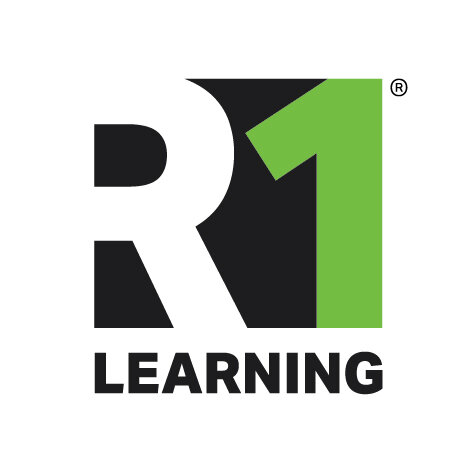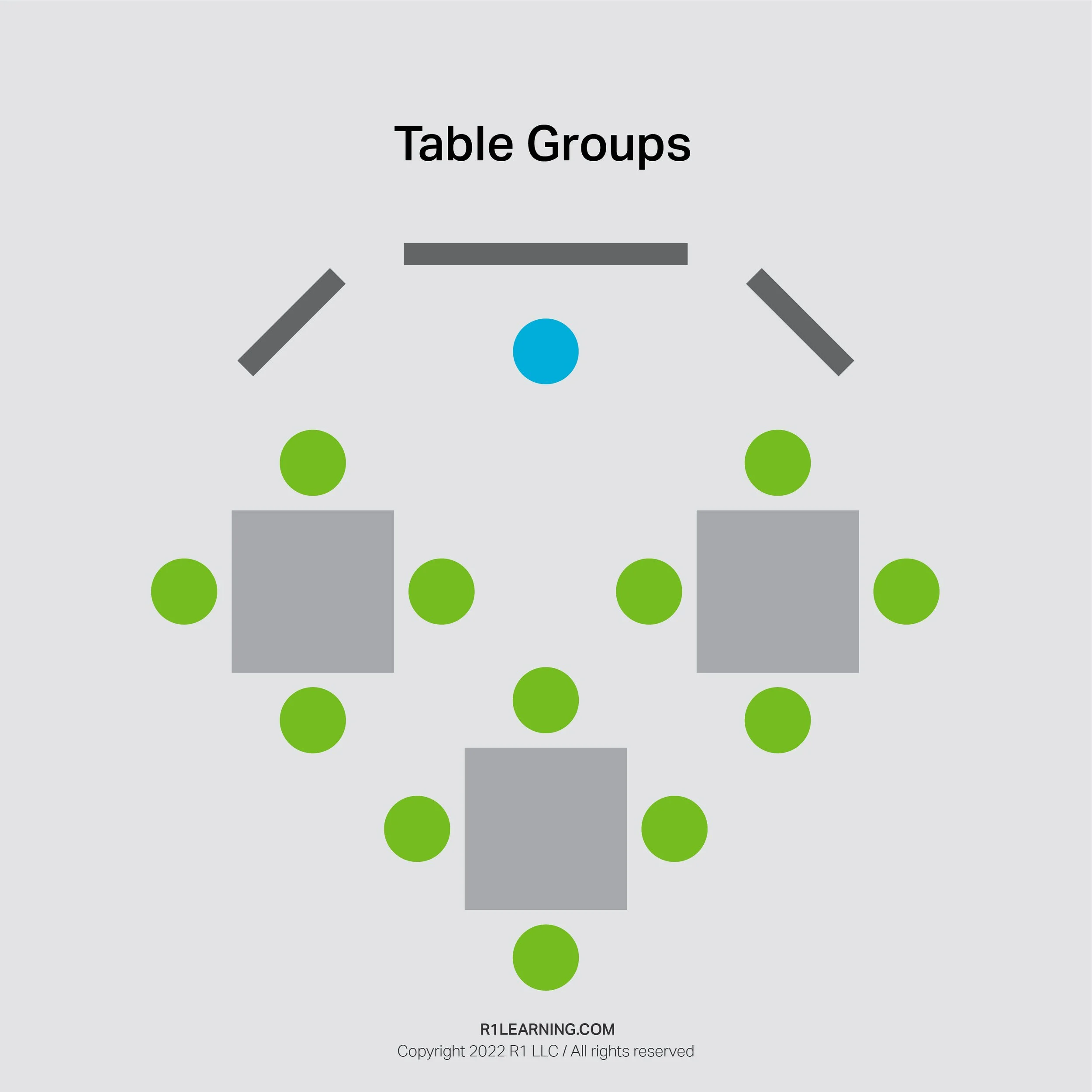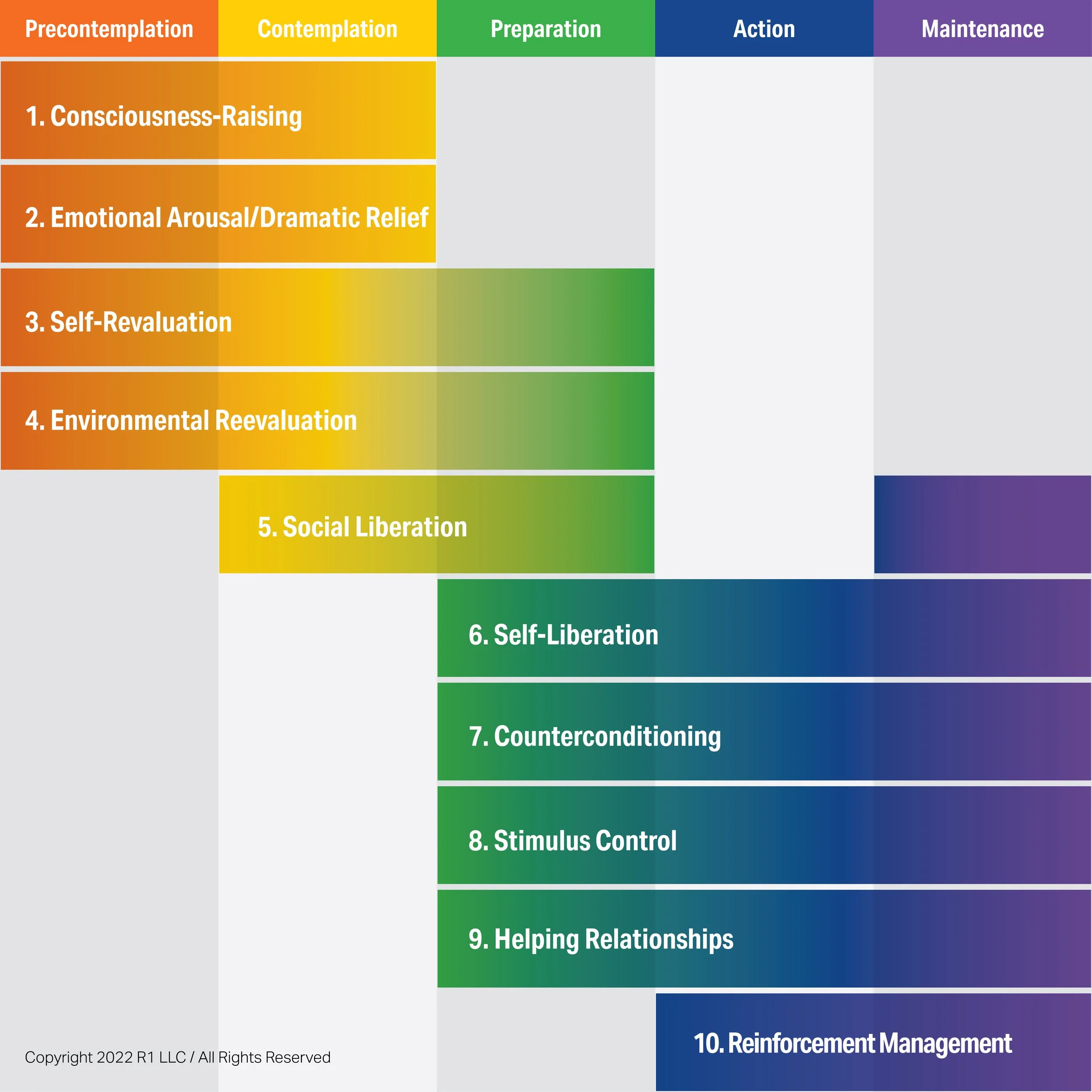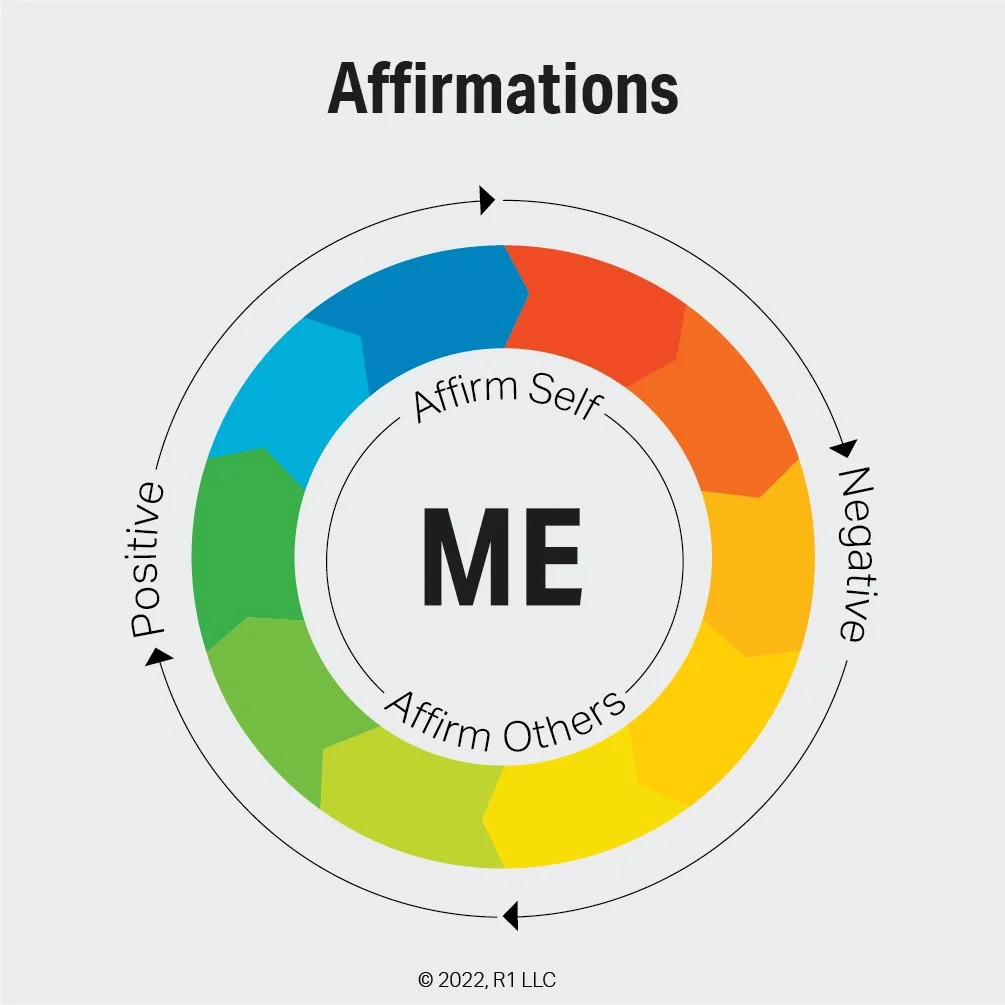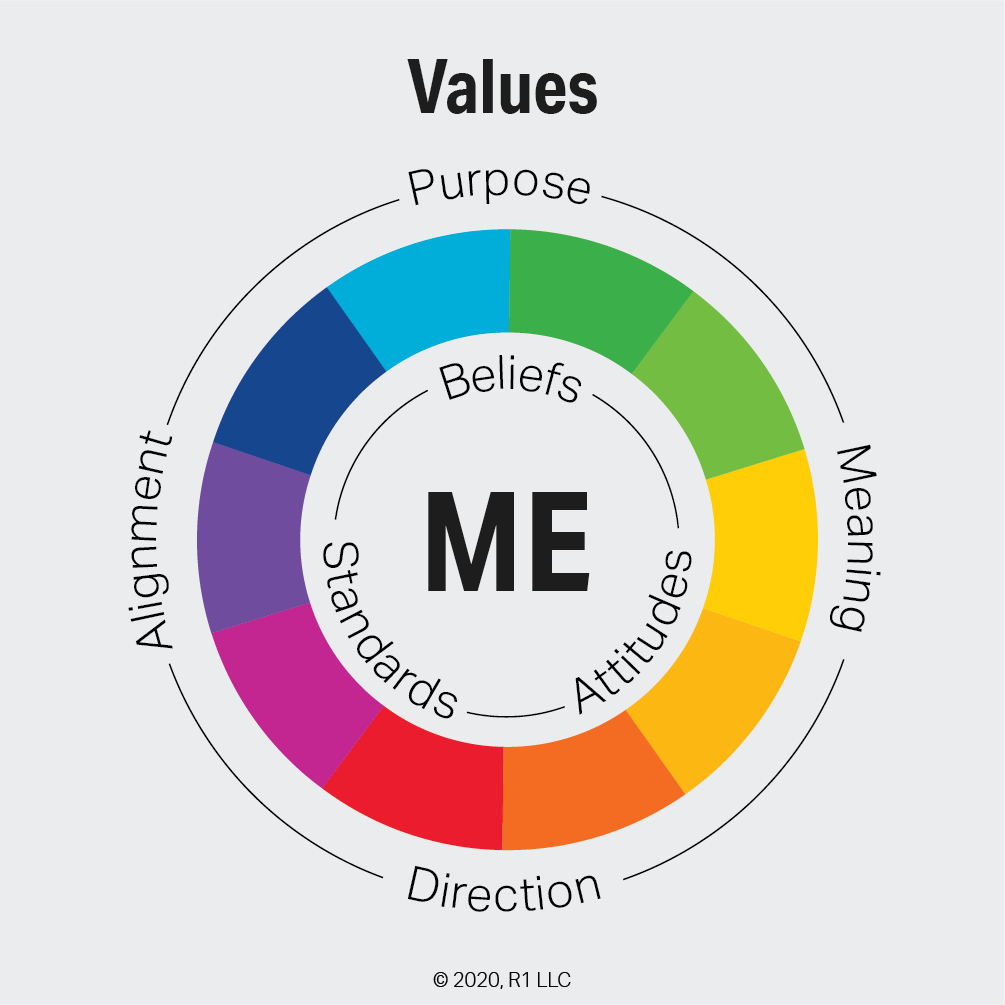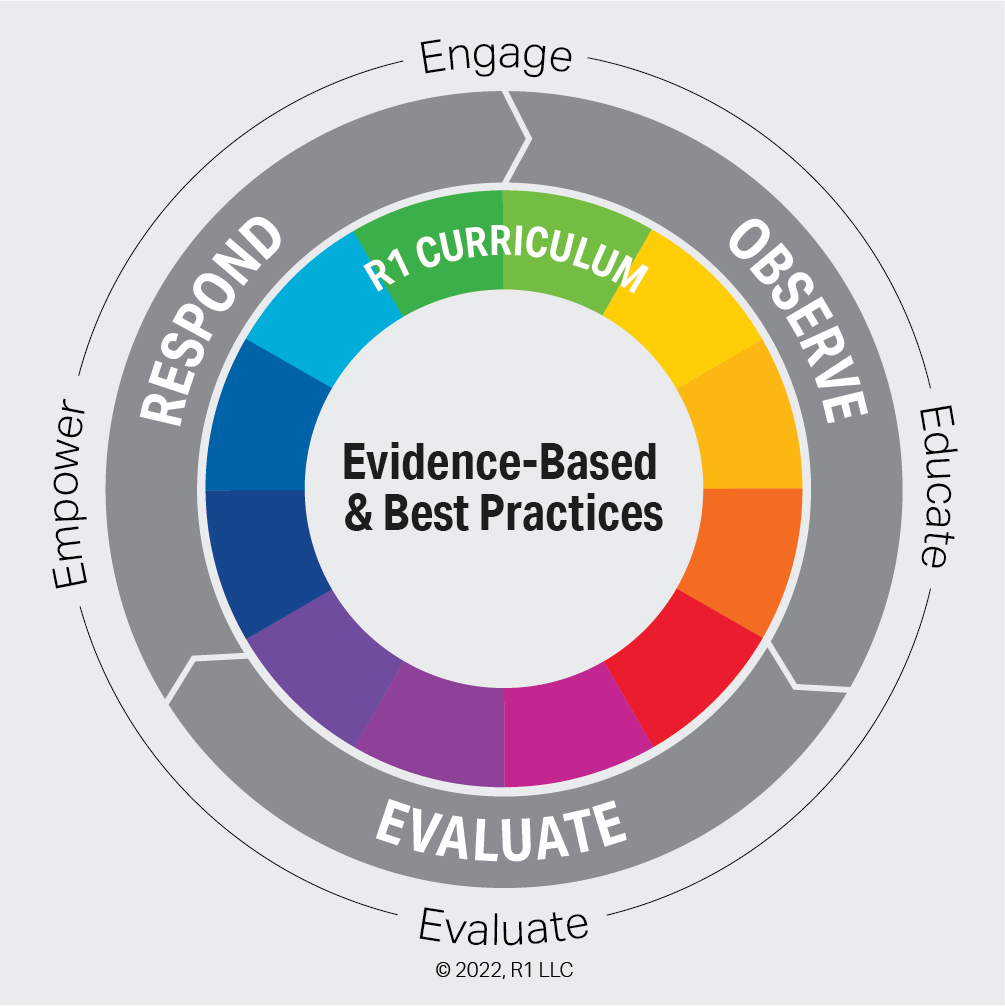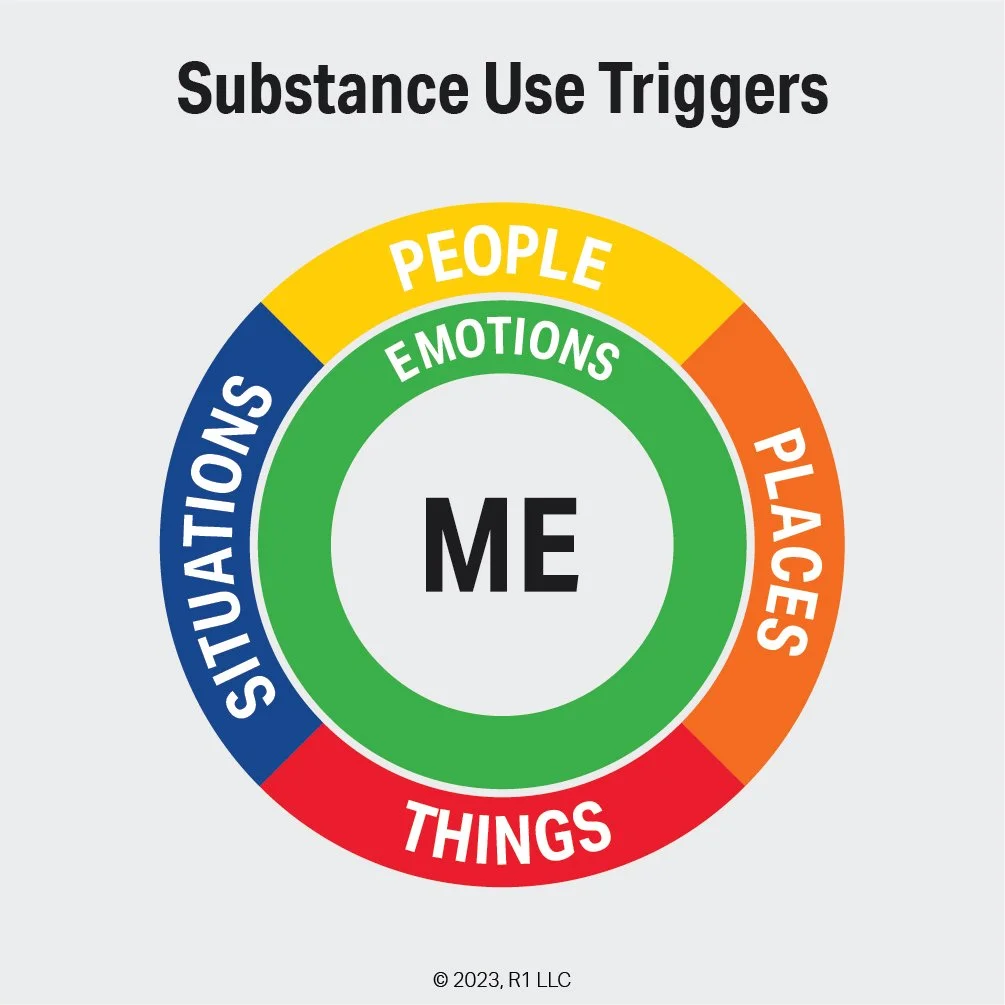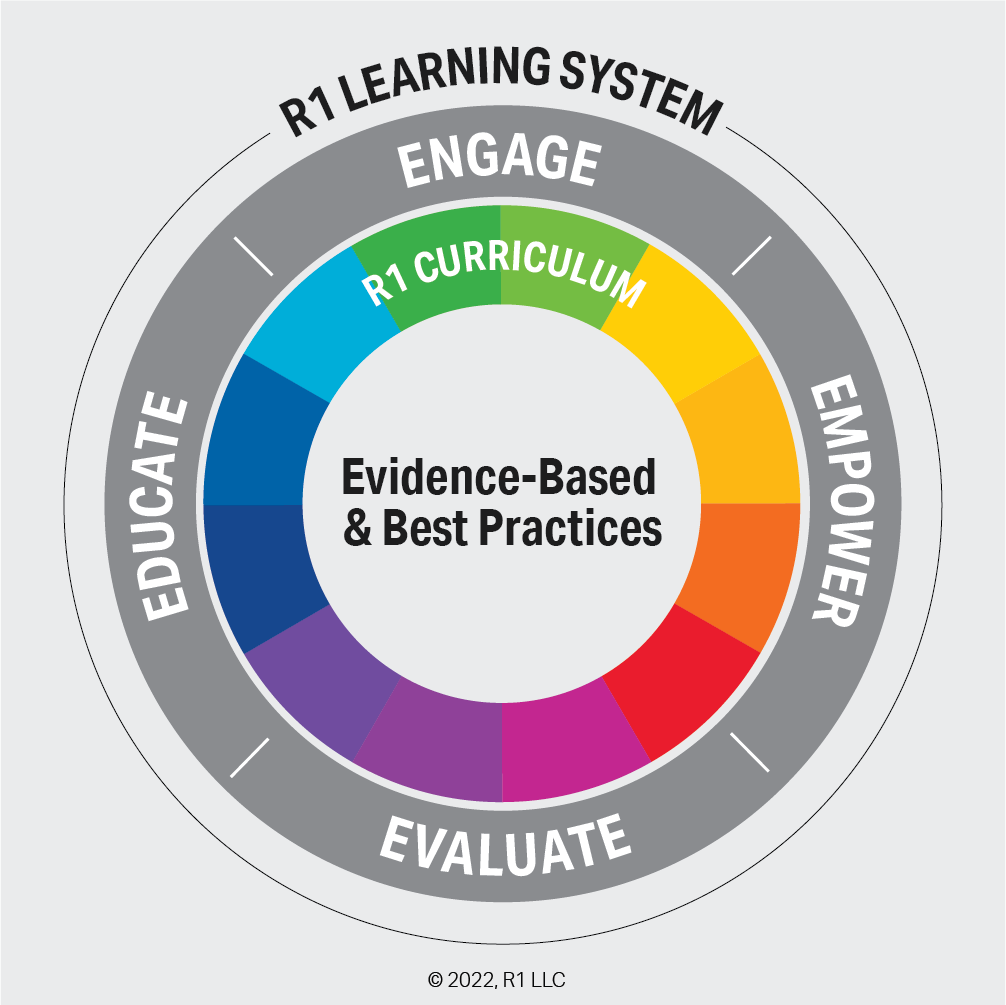How does structure impact one’s learning experience? is one of the major questions we’ve been shining a light on since R1 Learning’s inception. There is little for me to tell you in this post. The main point is your observation of the 9 structures below and your own experiences either being in one (being one of the green dots) or facilitating one (being one of the blue dots). Each has a primary purpose. Each has pros and cons. Structure has a way of placing emphasis on the blue dot in relation to the green dots. As you observe the 9 configurations, which ones
Read MoreWhile the Stages of Change are useful in explaining when changes in cognition, emotion, and behavior occur, the Processes of Change help to explain how those changes occur. These ten processes, which are highlighted in the table and defined below, can enable individuals to successfully progress through the Stages of Change when they attempt to modify problem behaviors and attain desired behavior change.
Read MoreThe Schwartz Values Wheel is a highly researched model developed by Dr. Shalom Schwartz while examining over 80 cultures around the world. The model defines 8 Values Dimensions, 10 Values Types, and fifty-seven (57) unique motivational values.
Read MoreThe struggles of boundary management touches all individuals in the world, not just individuals dealing with substance use or other mental health conditions. It is a universal challenge and one worth exploring given it’s purpose of being and feeling healthy and safe.
Read MoreThe Consequences of high-risk behavior (addiction, substance use, and other harmful behavior) is staggering. Hundreds of thousands of people die each year from the use of drugs and alcohol. Millions more are affected. Families and communities are ravaged. The cost to businesses is immense with increased sick leave, tardiness, injuries, and loss of productivity. Use of substances has become an international crisis
Read MoreReturn to substance use (Relapse) is not simply drinking or using drugs after a period of sobriety. The seeds for returning to drinking or using are planted well in advance of the behavior when normalized thinking and feelings start to become distorted…
Read MoreCurriculum design and development is a discipline onto itself. Training and development is an industry with subject matter experts, best practices, and professionals skilled in the craft.
Read MoreEvidence-based practices deliver greater outcomes for individuals and programs is supported by research. But they can only reach their full potential when people are engaged with learning and utilizing these practices.
Read MoreBuilding new positive stories and beliefs takes time. They result from the regular, repeated, and consistent re-connection with core values, new healthy choices and behaviors, and a shift in the fundamental thinking that one can achieve through self affirmations.
Read MoreOne of the key ingredients for exploring career options and thriving at work is knowing what we love to do — our career interests. This is where passion comes from. When we are engaged in work that is aligned with our natural interests, we are healthier, happier, and contribute more fully.
Read MoreValues provide purpose, meaning, and direction in life. They are the fundamental beliefs, attitudes, and standards that guide and motivate behavior and choices of what is important in life. They are the standards or criteria by which one observes, evaluates, and responds to one’s social environment or settings at any level – the world as a whole, one’s country, city, township, community, workplace, school, family, or social group.
Read More“Engagement” has been at the heart of R1’s mission from the very start. Our focus has been on engaging individuals, practitioners, and organizations with the leading evidence-based strategies for substance use disorder and mental health and wellness. “Engagement” is a broad term that can mean many and varied things. From our perspective, we think of engagement on multiple levels.
Read MoreThe TTM, and particularly the Stages of Change Model, is one of the leading models in behavioral health and has been applied to many different behavioral health issues beyond its original focus in smoking cessation. Because of the TTM’s focus on the behavioral change processes, it is well suited to the treatment of habitual and addictive behaviors.
Read MoreEveryone’s path through addiction and recovery is unique. However, there are more shared experiences than differences. Having a model to help individuals see how their own journey through addiction might unfold provides opportunities for insights and builds self-efficacy. Addiction is always accompanied by denial — denial that one has a problem, that the problem is serious, that one needs help to address the problem.
Read MoreTreatment programs, especially intensive outpatient programs (IOPs), are quickly redesigning their curriculum in order to facilitate virtual treatment groups. What are you doing given the new social distancing requirements?
Read MoreSubstance use triggers are challenging to avoid because they are usually an integral part of one’s life. Most of the time they are not completely avoidable since people do not generally have complete control over the environments they move into and out of on a daily basis.
Read MoreHow does one guide clients through the minefield of early recovery when the customary tools and resources are unavailable? Likewise, How do we keep staff engaged in routine training and continuing education from a distance? How do we adhere to our standard policies and procedures in this climate?
Read MoreAlthough people’s first exposure to the R1 Learning System were our Discovery Cards decks, it was clear from the beginning that we are much more than a card company.
Read MoreEngagement is on the front line in behavioral health settings. But what does engagement really mean, and how does it show up? And what can you do to improve engagement — in your own patient encounters, and in your workplace more broadly?
Read MoreWords matter. The more words or labels individuals have to help them describe and express what they are thinking and feeling – to family, friends, and counselors, the sooner they can make healthy choices, take action, and move forward toward meaningful change.
Read More